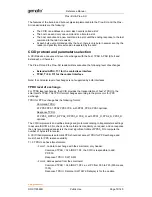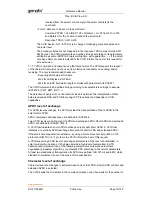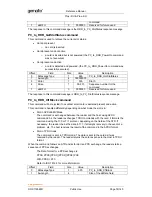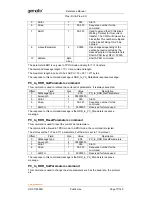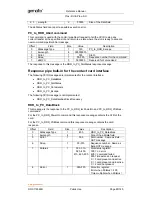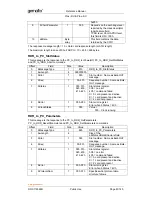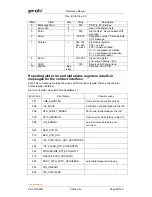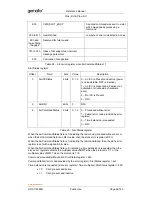
Reference Manual
Prox–DU & Prox–SU
www.gemalto.com
DOC118569D
Public Use
Page 70/145
The first TA1 for T=15
The first TA for T=15 encodes the clock stop indicator (X) and the class indicator (Y). The
default values are X = “clock stop not supported” and Y = “only class A supported”. For the
use of clock stop and for the use of the classes of operating conditions refer to the ISO7816-
3 standard.
•
According to the next table, bits 7 and 6 indicate whether the smart card supports
clock stop (
≠
00) or not (= 00) and, when supported, which state is preferred on the
electrical circuit CLK when the clock is stopped.
Bits 7 and 6
00
01
10
11
X Clock
stop
not
supported
State L
State H
No preference
Table 22 – clock stop indicator X
•
According to the next table 10, bits 5 to 1 indicate the classes of operating
conditions accepted by the smart card. Each bit represents a class: bit 1 for class A,
bit 2 for class B and bit 3 for class C.
Bits 5 to 0
00 0001
00 0010
00 0100
00 0011
Y
A only (5V)
B only (3V)
C only (1.8V)
A and B
Bits 5 to 0
00 0110
00 0111
Any other value
Y
B and C
A, B and C
RFU
Table 23 – class indicator Y
The first TB for T=15
The first TB for T=15 indicates the use of standard or proprietary use contact (SPU) by the
smart card. The default value is “SPU not used”.
Coded over bits 6 to 0, the use is either standard (bit 7 set to 0), or proprietary (bit 7 set to
1). The value '00' indicates that the smart card does not use SPU. Any other value where bit
7 is set to 0 are reserved for future use.
For additional information about the ATR contents please refer to the ISO7816-3 standard.
Summary of Contents for Prox-DU
Page 4: ......

















